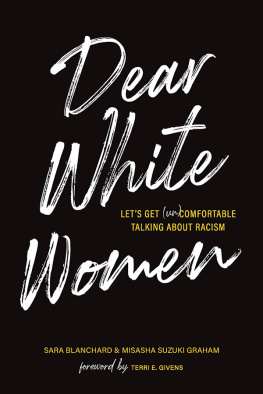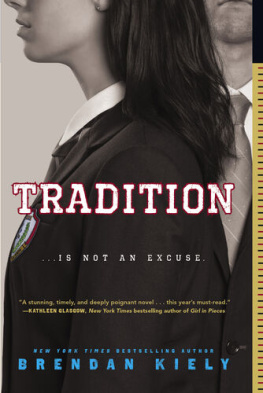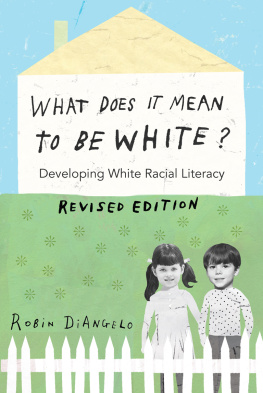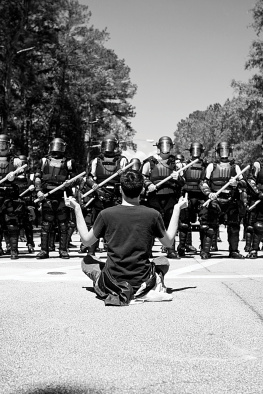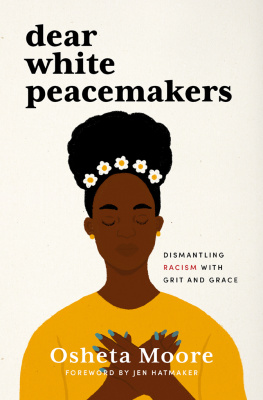
Copyright 2021 by Sara Blanchard and Misasha Suzuki Graham.
All rights reserved. No part of this book may be reproduced in any form without written permission from the publisher.
Library of Congress Cataloging-in-Publication Data available.
ISBN: 978-1-951412-31-9
Ebook ISBN: 978-1-951412-43-2
LCCN: 2021902202
Manufactured in the United States of America.
Cover design by Andrea Kelly.
Interior design by Maureen Forys, Happenstance Type-O-Rama.
The Collective Book Studio
Oakland, California
www.thecollectivebook.studio
To all who have trusted me with their stories.
S. B.
To those who are, or remind me of, my why.
M. S. G.
Foreword
T he third decade of the 21st century has started with a mind-numbing series of violent events and trauma. The murder of George Floyd, a contentious election, and the January 6 attack on the U.S. Capitol, as legislators were certifying the presidential election, left many of us in shock. For the African American community, it was a reminder of hundreds of years of trauma that have led to a society that remains mired in structural racism, often marked by violence.
As we experience these events, it is important that we cultivate allies who understand the broader impact of our ongoing fight for equality. This book is an important step on the path to creating change, developing trust, and eventually, reconciliation. Reading this book by Misasha and Sara made me realize that I couldnt ask for better kindred spirits. Phrases like looking inward, respectful dialogue, and the understanding that racism is largely baked into our society are ideas that play an important role in my own anti-racism work. This book emphasizes the importance of allowing ourselves not only to get uncomfortable, but also to use our relationships to create change. It is through our personal connections that we can practice empathy and take action.
It is in my nature to be collaborative, and I love the fact that Misasha and Sara demonstrate the power of coming together as allies to address structural racism. Black men and women have carried the burden of fighting for civil rights and dealing with injustice for too long, and although there have always been allies, we need more. We need every person who cares about social justice to take up these issues, because we are once again at a critical juncture for the future of our children, this country, and the world.
Storytelling is central to anti-racism work. For African Americans, being able to tell our stories is important not only for understanding ourselves, but also for helping others to have empathy. However, stories and empathy are not enough. For hundreds of years, we have been fighting the scourge of structural racism. We must honor those who have sacrificed their safety and their lives to create change. We cannot be complacent about the challenges we are facing.
This book provides clear steps that White women (and men) can take to create changenot by being White saviors, but by using the privilege they have to empower others of all races and ethnicities. It starts by changing ourselves. The organizing principles of Listen, Learn, and Act that form the foundation of this book mesh very well with my six steps to radical empathy:
- Being willing to be vulnerable: Allowing ourselves to be vulnerable means looking honestly at the ways that structural racism impacts each of us, and how that manifests itself in our daily actions.
- Becoming grounded in who you are: By focusing on the truth of who you are, it is easier to become open to the ways that others are impacted by societal forces.
- Opening yourself to the experiences of others: In order to have empathy, we have to be willing to consider that others have experiences that are different from our own, and that we must be intentional in trying to understand our differences. It means avoiding making assumptions about people, and being willing to listen and to learn.
- Practicing empathy: We have to be intentional and work at trying to see things from someone elses perspective.
- Taking action: What can you do to bridge divides? Start by looking at your own actions, whom you connect with, how you show kindness.
- Creating change and building trust: It can start with small steps, but it is important to show that we are willing to get out of our comfort zone to create change.
White women are a critical component to change in this country. I have seen White women in my own neighborhood mobilize to support progressive organizations and political candidates. We have marched for Black lives right here in our own suburban neighborhood. Despite the pandemic, we have worked to forge new relationships and alliances. What I have found is that we energize each other. When Im feeling depleted, I can turn to books like this to remind myself that Im not in this alone. It is so important that we help each other carry the load, and Im grateful for Misasha and Saras work.
Terri E. Givens , author of Radical Empathy: Finding a Path to Bridging Racial Divides
Introduction
Those who stand up for justice will always be on the right side of history.
Martin Luther King, Jr.
T here are certain moments in our historyboth personal and textbookthat stand out as flashpoints, when something changes so quickly that it shakes our footing and threatens to change our lives forever.
The personal might be a sudden death in the family. An unexpected layoff. A business shuttered, unable to survive in changing times. Have you been there?
If so, you know that these flashpoints stop you in your tracks and force you to take stock of your life, reexamine your values, and decide how you will handle whatever it is you decide to do next, to make it through. Youll never be the same person you were before that moment.
Other flashpoints are those that we experience as a society, like 9/11, World Wars, and even the awful things that we have seen captured on cell-phone video and sent around the world.
The brutal murder of a Black man by a White Minneapolis police officer, who spent 9 minutes and 29 seconds kneeling on the neck of a fellow human being who was begging for his life and even cried out for his mother, brought the United States to its knees as it began yet another cycle of reckoning with race.
Although this wasnt the first murder of a Black man at the hands of a White man, nor will it be the last, the convergence of mass access to technology during a time when the world was shut down due to the coronavirus pandemic meant that George Floyds murder took center stage in more minds than at other times in recent history. It was a collective flashpoint.
If you picked up this book, were guessing that the developments of 2020 impacted you in some way and sent you searching for answers.
Maybe youre asking yourself how we as a country got here. Maybe you like the idea of being more anti-racist, to hold yourself and others accountable, but youre not sure where to start. Maybe this is the twenty-third book youve picked up this year, looking for the best way to understand other perspectives or a theory of racism that makes sense to you.
We know. Were there with you in the search for understanding.
We also know that this search can be overwhelming. Youre suddenly attuned to every article that talks about racism and White supremacy and what White people can do better. You notice every time you see someone of color, wondering if you came across as friendly and accepting enough. You scroll through your social media feed and find yourself questioning the legitimacy, motivation, and truth of each post. You debate how toor even if you want totalk with your aging (or any) relatives about the inappropriate things that come out of their mouths.
Next page
